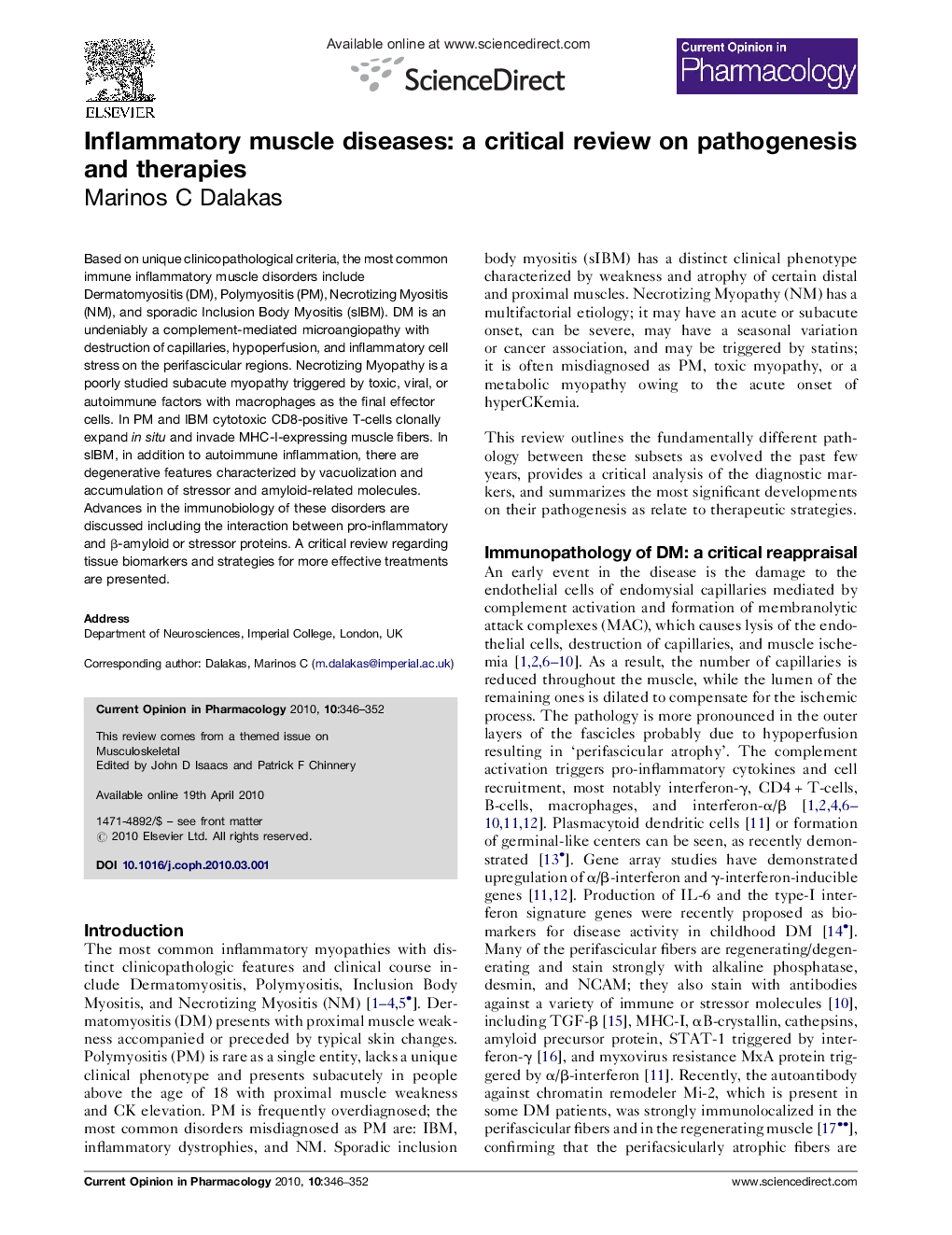| کد مقاله | کد نشریه | سال انتشار | مقاله انگلیسی | نسخه تمام متن |
|---|---|---|---|---|
| 2530205 | 1120440 | 2010 | 7 صفحه PDF | دانلود رایگان |

Based on unique clinicopathological criteria, the most common immune inflammatory muscle disorders include Dermatomyositis (DM), Polymyositis (PM), Necrotizing Myositis (NM), and sporadic Inclusion Body Myositis (sIBM). DM is an undeniably a complement-mediated microangiopathy with destruction of capillaries, hypoperfusion, and inflammatory cell stress on the perifascicular regions. Necrotizing Myopathy is a poorly studied subacute myopathy triggered by toxic, viral, or autoimmune factors with macrophages as the final effector cells. In PM and IBM cytotoxic CD8-positive T-cells clonally expand in situ and invade MHC-I-expressing muscle fibers. In sIBM, in addition to autoimmune inflammation, there are degenerative features characterized by vacuolization and accumulation of stressor and amyloid-related molecules. Advances in the immunobiology of these disorders are discussed including the interaction between pro-inflammatory and β-amyloid or stressor proteins. A critical review regarding tissue biomarkers and strategies for more effective treatments are presented.
Journal: Current Opinion in Pharmacology - Volume 10, Issue 3, June 2010, Pages 346–352